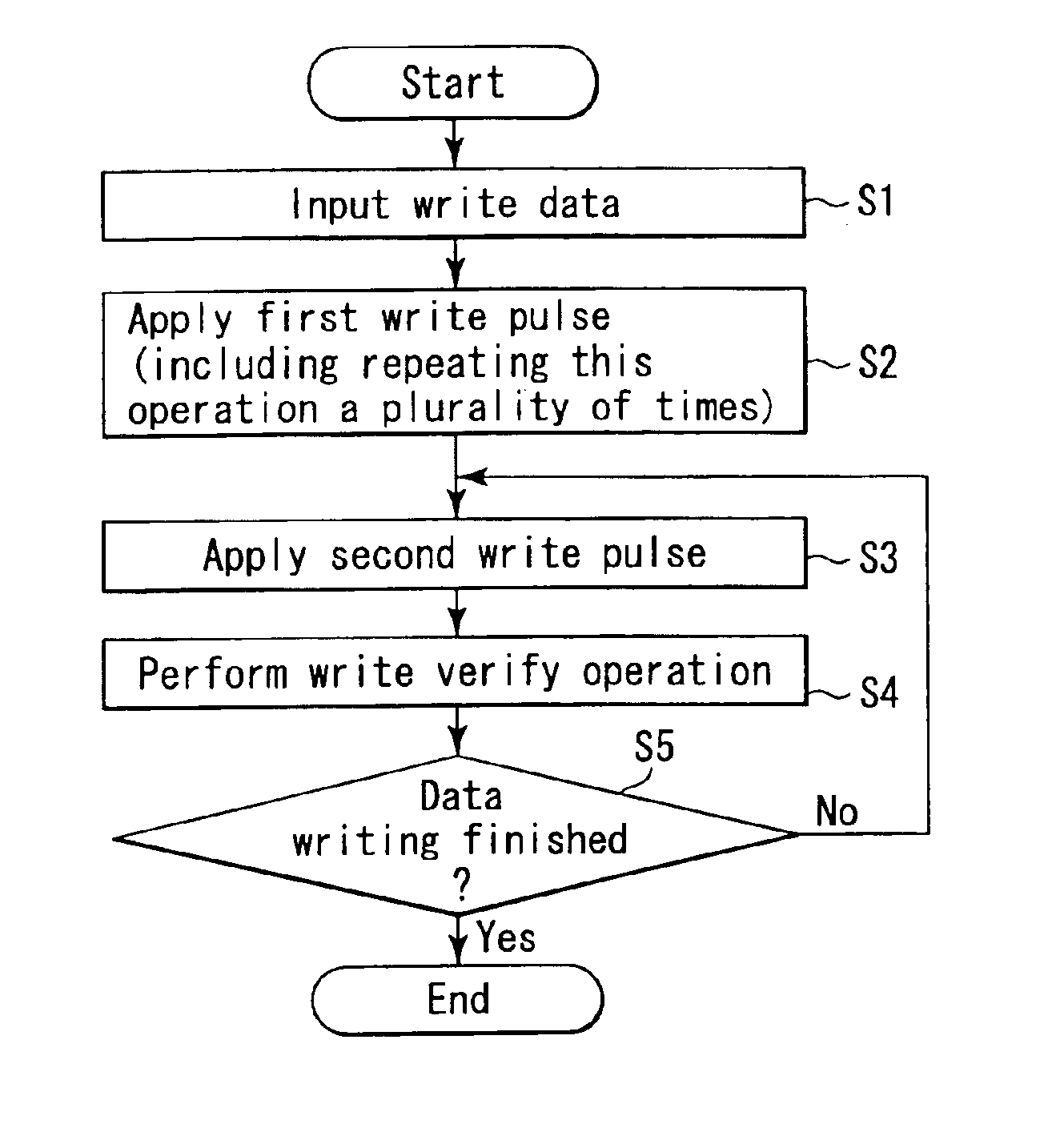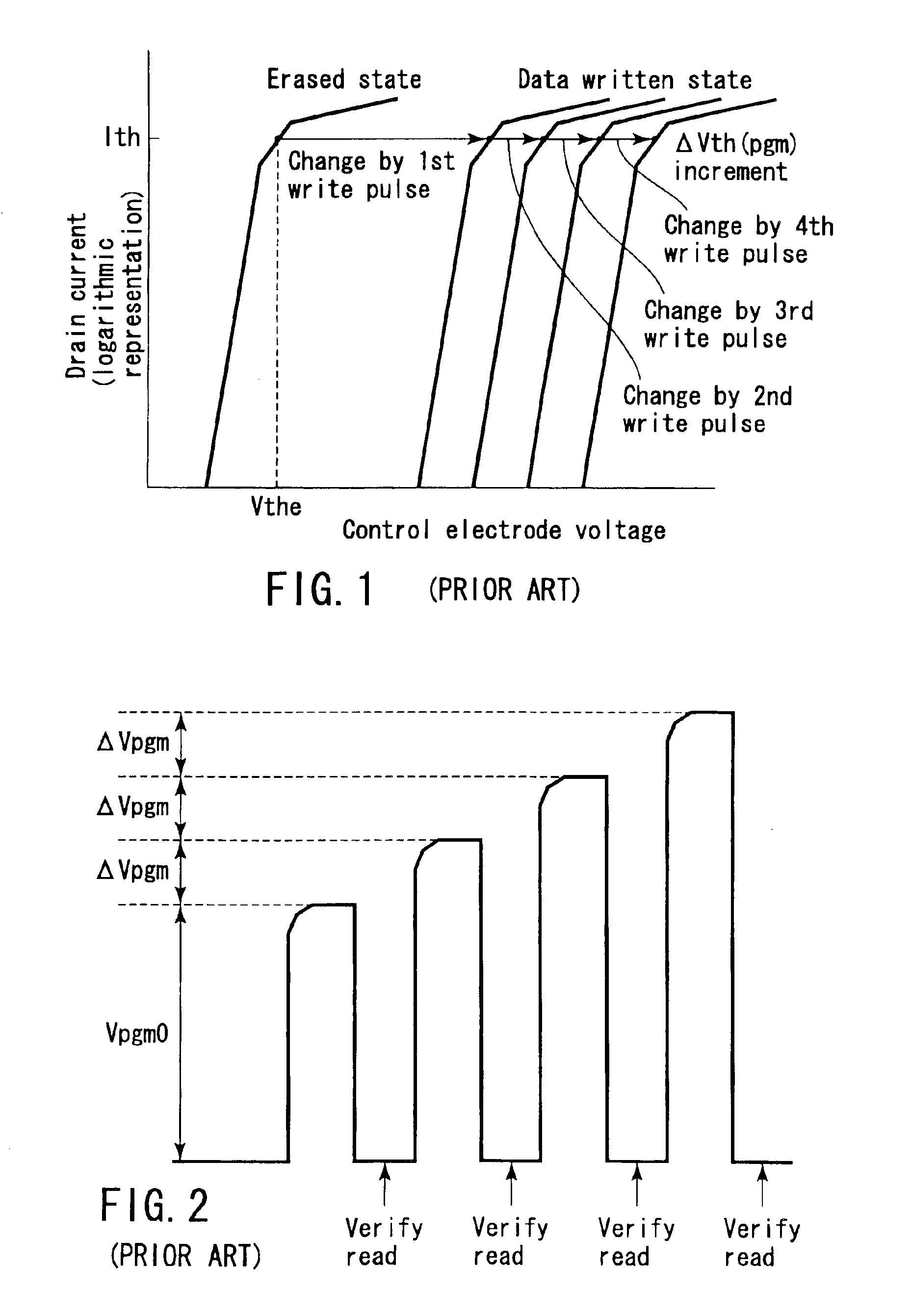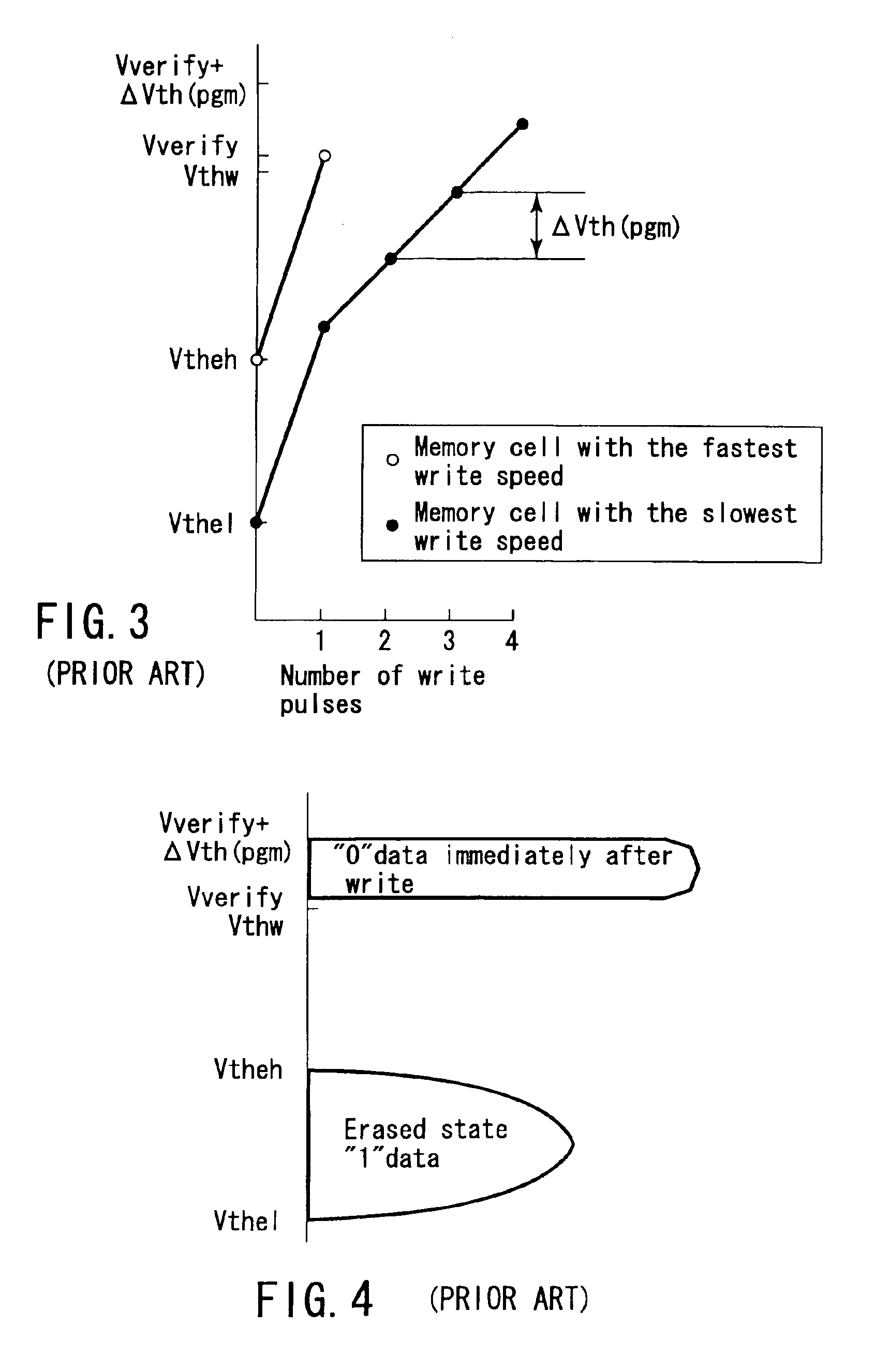Nonvolatile semiconductor memory device
a semiconductor memory and non-volatile technology, applied in static storage, digital storage, instruments, etc., can solve the problems of inability to distinguish between written state and erased state, increase the threshold value of a cell in erased state gradually, and adversely influence the charge retention characteristi
- Summary
- Abstract
- Description
- Claims
- Application Information
AI Technical Summary
Benefits of technology
Problems solved by technology
Method used
Image
Examples
first embodiment
[0119][First Embodiment]
[0120]A MONOS flash memory according to a first embodiment of the present invention will be explained. In a MONOS cell, if the captured charge centroid is in a place a distance of tox equivalent to oxide film thickness from the semiconductor substrate, the electric field in the tunnel oxide film is Eox, the capacitance between the captured charge centroid and the gate electrode is C1, and the sum of the capacitance between the charge centroid and the control gate and the capacitance between the charge centroid and the semiconductor substrate is Ctot, these reference symbols can be considered in the same manner as those in a conventional floating-gate memory cell.
[0121]It is well known that writing data into a MONOS cell (that is, injecting electrons) can be expressed in FN tunnel current as into a floating-gate cell (reference 4: “Scaling of Multidieledtric Nonvolatile SONOS Memory Structures,” M. L. French and M. H. White, Solid State Electronics Vol. 37, No...
modification 1
[0149][Modification 1 of First Embodiment]
[0150]The case where a write pulse is applied only once in the first write operation has been explained. Next, a case where a pulse with a write start voltage of Vpgm0′ [V] is applied in the first write operation and thereafter a write operation is repeated a plurality of times (n>1) with a voltage raised in steps of the step-up voltage ΔVpgm1 will be explained.
[0151]FIGS. 10 and 11 correspond to FIGS. 6 and 8, respectively. A broken line in FIG. 11 shows the case of the comparative example (ΔVth(pgm1)=ΔVth(pgm2)).
[0152]As shown in FIG. 10, in modification 1, two write pulses are applied in the first write operation. During and after the first write operation, the thresholds voltages of all of the memory cells have not reached the write end decision voltage Vverify and therefore a verify operation is not needed. By doing this, the time required to make a write end verify determination can be reduced further. Here, when n>1, ΔVth(pgm1) is det...
second embodiment
[0187][Second Embodiment]
[0188]The effect of the first embodiment is not peculiar to the MONOS cell structure using an insulating film as a charge accumulation layer and is also expected even in a floating-gate cell structure with an ONO film intervening between a control gate electrode and a floating-gate electrode. The reason is that the ONO film has a stacked structure of a silicon oxide film, a silicon nitride film, and a silicon oxide film in that order and that the ONO film has the same stacked insulating film configuration as that of the stacked insulating film including the charge accumulation layer of a MONOS cell explained in the first embodiment.
[0189]When either the thickness of the upper oxide film of the ONO film or the thickness of the lower oxide film is decreased to 4 nm or less, an increase in the current flowing through the ONO film resulting from the injection of holes into the silicon nitride film is observed. This phenomenon has already been reported (reference...
PUM
 Login to View More
Login to View More Abstract
Description
Claims
Application Information
 Login to View More
Login to View More - R&D
- Intellectual Property
- Life Sciences
- Materials
- Tech Scout
- Unparalleled Data Quality
- Higher Quality Content
- 60% Fewer Hallucinations
Browse by: Latest US Patents, China's latest patents, Technical Efficacy Thesaurus, Application Domain, Technology Topic, Popular Technical Reports.
© 2025 PatSnap. All rights reserved.Legal|Privacy policy|Modern Slavery Act Transparency Statement|Sitemap|About US| Contact US: help@patsnap.com



